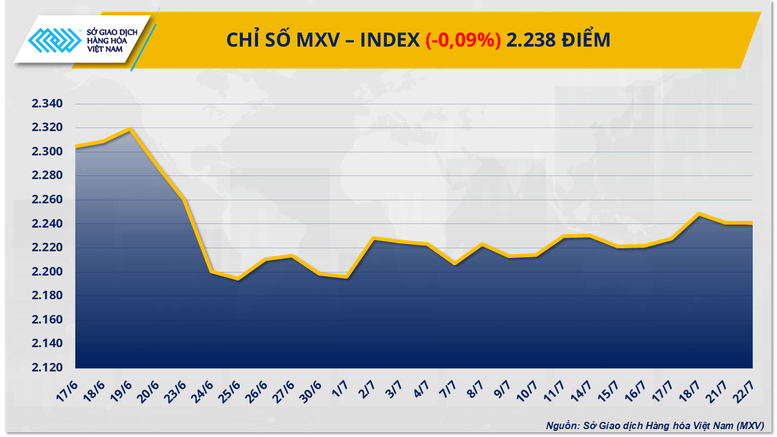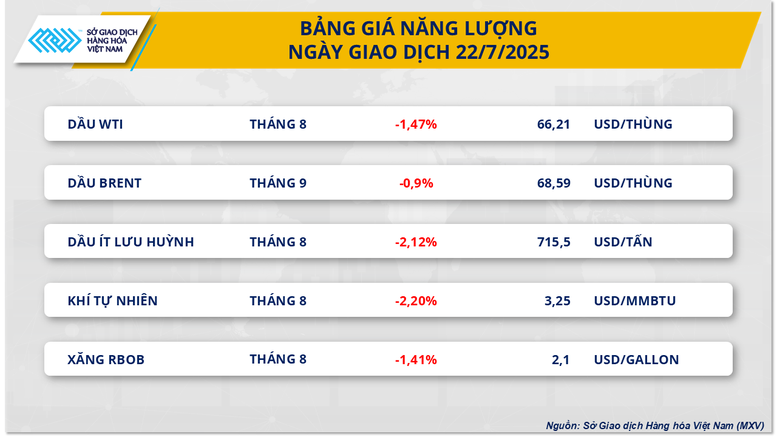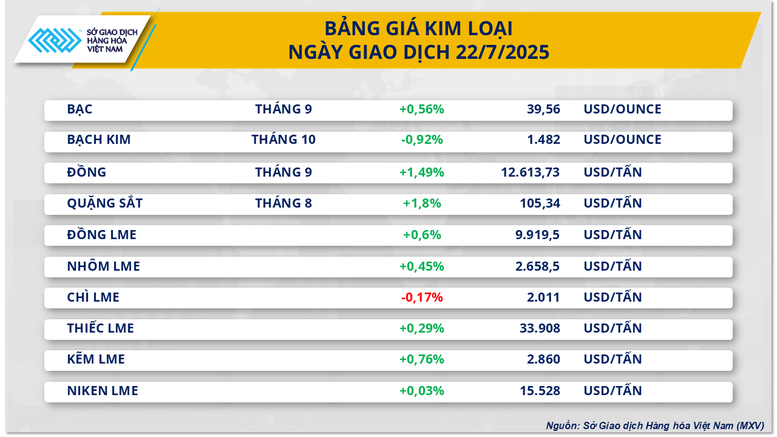
Oil prices continue to weaken
According to MXV, the energy market was dominated by red in yesterday's trading session. At the end of the session, WTI oil prices recorded a decrease of up to 1.47%, falling to 66.21 USD/barrel, the lowest level in nearly three weeks. Brent oil prices also decreased by 0.9% yesterday, stopping at 68.59 USD/barrel.
The global oil market continues to face a new wave of concerns about economic growth prospects, pushing energy demand to continue to weaken in the context of the US government's upcoming deadline for applying reciprocal tariffs. As of the end of yesterday's session, the US had only reached trade agreements with the UK, Vietnam and Indonesia. Information about the European Union (EU) preparing retaliatory measures or the unsatisfactory negotiation process between the US and India further complicated the market picture.

The latest move from the US and Japan has attracted attention in the international market. Accordingly, last night, Vietnam time, the US announced a trade agreement with Japan, thereby creating expectations that it will contribute to easing trade tensions in the current global market.
In addition, oil prices continue to be under pressure as the basic interest rate in the US remains high at 4.25-4.5%, according to the decision of the Federal Open Market Committee (FOMC) of the US Federal Reserve (Fed).
Copper prices increased for the third consecutive session.

On the other hand, the metal market witnessed strong buying power as 8/10 commodities closed in the green. Notably, COMEX copper prices continued to extend their gains for the third consecutive session, rising nearly 1.5% to $12,613/ton and setting a new record high never recorded before. This development reflected a strong hoarding trend, as concerns about the risk of local supply shortages due to the US tightening tariffs remained.
Earlier, US President Donald Trump announced a 50% tariff on imported copper on July 8, and the copper market immediately reacted strongly. Data from Kpler showed that immediately after this move, copper prices on the COMEX floor skyrocketed, causing the price gap with LME copper to immediately widen from 11% to 27%. Notably, by the trading session on July 22, this large gap was still maintained around the 27% threshold.
According to the United States Geological Survey (USGS), currently, 45% of the country's copper demand still depends on imported supplies.
Source: https://baochinhphu.vn/mxv-index-chua-thoat-khoi-dien-bien-giang-co-trong-vung-2200-diem-102250723093111116.htm
























![[Infographic] Vietnam-Senegal traditional friendship](https://vphoto.vietnam.vn/thumb/1200x675/vietnam/resource/IMAGE/2025/7/23/4c96a604979345adb452af1d439d457b)
















































































Comment (0)